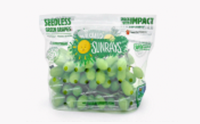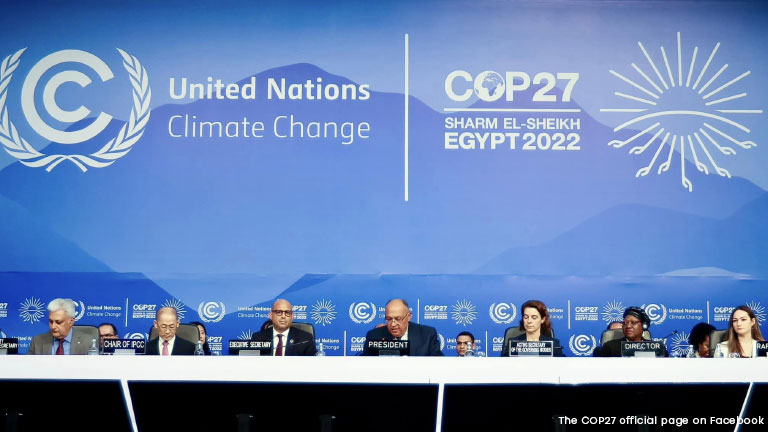For the past two decades, we’ve witnessed the rise and injurious effects of fast fashion. The constant need to replace ongoing trends with the latest manufacturing miracle solutions has taken a toll on the already burdened supply chain, as well as the overall workforce, quality of the fashion industry, and ultimately, the environment.
In midst of the ongoing battle for higher sustainability, the need to abandon fast fashion as a trend and reintroduce the sustainable concept of slow fashion continues to grow.
The ongoing battle between the two still hangs in the air, with many questioning whether the industry will agree to build a conscious and sustainable future for us all.
Naturally, this leads to a monumental question: what separates fast from slow fashion? Better yet, what makes slow fashion a far more sustainable and viable choice?
A Dive Into Fast Fashion
Fast fashion refers to the mass reproduction of already branded clothes, at a more affordable price. It uses two approaches: quick response manufacturing, which helps maintain the demand in manufacturing and delivering trendy clothing items and dynamic assortment, which refers to continuing – or never-stopping – the distribution of the latest fast-fashion pieces.
Although an overperforming practice and one trusted by countless customers, fast fashion as a process is nothing short of damaging. As it turns out, this never-ceasing cycle becomes solely responsible for 10% of carbon emissions worldwide.
Because fast fashion is time-based, the manufacturing process also uses less than desirable agricultural methods. Man-made fabrics are usually impossible to dispose of – given that most are made of undegradable synthetics – and are essentially manufactured to meet the high demand of fast fashion, on purpose. Toxic chemicals and synthetic fabrics also play the roles of damaging entities in the fast fashion process. From fabric dyes to synthetics and remaining chemicals, fast fashion seems to, unfortunately, contribute to polluting open waters, and impairing the environment faster than it can recover.
Unsustainable measures aid the excessive production in fast fashion has a plethora of side effects on its workforce. For one, people who design and create for fast fashion brands are oftentimes underpaid yet overworked. They also operate beyond unreasonable conditions, meeting expansive deadlines over a tight timespan. There are even cases indicating fast fashion workers work from 14 to 16 hours a day, and sometimes even more.
The focal point for countless fast fashion brands is getting trendy outfits to stores worldwide, and pronto. Hence, aside from appearances, there is no actual essence or dedication in the process, which makes it somewhat insignificant. Typically, most of these clothes will have a short lifespan, lack of quality, and disposability. But, interestingly, that doesn’t disappoint consumers, rather, unfortunately, urges them to purchase even bigger.
The Numbers
As per a 2020 report by Fashion Transparency Index, around 54% of fast fashion brands indicated 20% less transparency in social and environmental issues.
Not just that, but as per a McKinsey report, in 2018, the textile industry alone – read, fast fashion – caused 2.1 metric tons of greenhouse-gas emissions, which makes an astoundingly greater number than gas emissions from all international flights and maritime shipping – combined. Adding fuel to the fire is a report by the Ellen Macarthur Foundation, noting that synthetic fabrics such as polyester and nylon waste up to 342 barrels of oil annually.
One of the greatest perils to the industry, along with nylon and polyester, is a fabric known as viscose. As per a study by Canopy, around 33% of the viscose used in clothing derives from protected or ancient forests, with over 70% of the remaining wood getting disposed of. Moreover, the EPA notes that the average American disposes of 80 pounds of clothing each year, which typically ends up in a landfill and further testifies to the catastrophic impact of fast fashion as a whole.
The Promise behind Slow Fashion
Spectating the fall of fast fashion and the consequences thereof calls for action of awareness. Luckily, the holistic answer to this menacing manufacturing tradition might be simpler than you had hoped. It’s called slow fashion and lazy as it sounds, it makes one of the greatest alleys to the environmental and social perils currently overshadowing the clothing industry.
When it comes to slow fashion, it is the polar opposite of the ways of fast fashion. Initially designed to last, slow fashion grows fabrics naturally and more importantly, sustainably. In the process, manufacturers completely abandon the use of chemical dyes or remaining environmentally harmful toxins. The process also dismisses possible concerns of water pollution and unsolicited water disposal.
The philosophy behind slow fashion is all about attention – every piece of clothing gets special treatment. Not to mention the treatment of factory and farm workers is far more fair and square, and even recognized throughout the industry. For employees, working in a slow fashion translates to having the proper working conditions, receiving the rightful wages, and spending feasible work hours.
Far from ethical and sustainable, slow fashion is galloping ahead of fast fashion, especially in terms of quality. Slow fashion garments are meant to last years and even a lifetime. Although some might find slow fashion pricier than its rival, it still represents a beyond effective way to save up on clothing in the long run. Instead of buying similar pieces every once in a while, you will be investing in garments that survive throughout the seasons, and we’re talking years.
Slow Fashion Brands
Nowadays, there are many companies that are making serious efforts to bring slow fashion back in the game. One of them is Mara Hoffman, whose fashion production centers around the use of sustainable fabrics such as REPREVE and ECONYL, both made of waste polyester fiber and recycled plastic, and apt for manufacturing swimsuits.
Mara Hoffman also works with hemp to design ready-to-wear items, along with clothing made of other favorable fabrics, such as ethical alpaca wool, fibrous plant-based materials, linen, and organic cotton. Aside from clothing, the brand is also sustainable in terms of packaging, branding, and shipping their goods, and follows all international environmental and human rights criteria during production.
Other worthy slow fashion brands that are taking the same route to sustainability and responsibility include Madewell, Gap, Adidas, and Levi’s – to name a few – with the latter even making it its mission to reduce 40% of carbon emissions during the manufacturing process by 2025.
The Decisive Choice
Noticing the main differences between fast and slow fashion puts things into perspective – both for consumers and businessmen.
Designing, manufacturing, packaging, and purchasing – these all fall under the slow fashion umbrella.
The approach pays close attention to each stage of the ‘making’, and positively impacts societies in every corner of the world. With more and more brands opting for viable solutions, TIPA offers stakeholders in the fashion industry an opportunity to adopt more sustainable practices by shifting to fully customizable and sustainable packaging.
Compostable packaging mimics conventional plastics in terms of transparency, durability, and shelf stability – yet has a circular end of life just like an organic waste.
The damage fast fashion continuously imposes on our environment is irreparable, not only by violating basic human labor rights but also as a result of the masses of waste generated from garments themselves and natural resources sacrificed to make them. This includes valuable forests, thriving lands now turned to junkyards, and the toxic air we breathe in turn.
But, in this day and age, there is nothing quite as impressive as the power of people demanding change. In fact, it will ultimately be the consumers’ choice to finally break the chains of the very much distorted fast fashion process and open the gates for slow fashion to arrive – in style!














